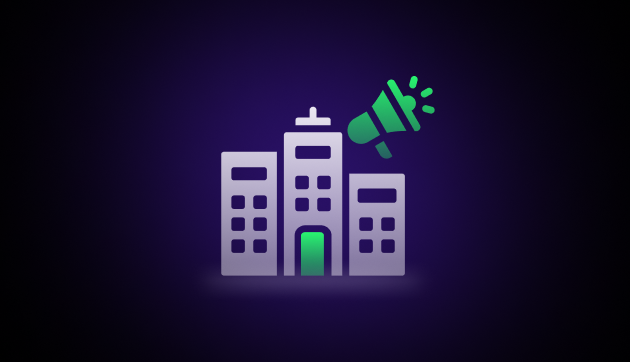
Business Intelligence vs. Business Analytics: 10 Key Differences
Mar 13, 2025 4 Min Read 5082 Views
(Last Updated)
The terms “Business Intelligence” (BI) and “Business Analytics” (BA) are often tossed around interchangeably, creating a whirlwind of Corporate buzzwords that can leave even the most seasoned professionals scratching their heads. The lack of universal consensus on what each role entails only adds to the confusion. However, understanding the nuanced differences between these two critical functions can significantly enhance a company’s strategic decision-making and operational efficiency.
To get a gist, Data Analysts provide the raw insights, BI Analysts turn those insights into strategic intelligence, and Business Analysts optimize the processes to apply this intelligence. Businesses can better leverage their data and drive more informed, impactful decisions by clearly distinguishing between these roles.
In this blog, we will delve deeper into the key differences between Business Intelligence vs. Business Analytics, clarifying how each function contributes to the broader business landscape. Whether you’re a seasoned professional or new to the field, this exploration will help demystify these vital concepts and highlight their unique contributions to business success.
Table of contents
- Let's cut through the jargon and simplify things:
- Definition and Focus
- Business Intelligence vs. Business Analytics: Comparison Table
- Data Usage
- End Users and Skills
- Tools and Technologies
- Business Intelligence (BI) Example Tools:
- Business Analytics (BA) Example Tools:
- Applications and Use Cases
- Reporting vs. Action
- Conclusion
- FAQs
- What is the main difference between Business Intelligence (BI) and Business Analytics (BA)?
- What tools are commonly used for Business Intelligence and Business Analytics?
- What are the average salaries for Business Intelligence and Business Analytics professionals in India?
Let’s cut through the jargon and simplify things:
Data Analyst: This role is all about wrestling with raw data to extract meaningful information. Imagine someone poring over mountains of data, deciphering trends, and revealing hidden patterns. In essence, a Data Analyst’s job is to tell us:
“This is what the data is saying.”
Business Intelligence (BI) Analyst: While Data Analysts focus on interpreting the data, BI Analysts take it a step further. They contextualize this information, transforming it into actionable insights for stakeholders. It’s not just about building dashboards; it’s about answering the critical question:
“This is what it means for the business.”
Business Analyst: Distinct from the former roles, a Business Analyst examines business processes. They evaluate whether these processes are still effective and explore how technology can enhance them. Their primary goal is to ensure business operations are as efficient and effective as possible. In essence, a Business Analyst’s job is to determine:
“This is how we can improve our processes.”
You may be interested in reading | Business Analyst – An Insight into Their Life
Enrolling in GUVI’s Business Analytics & Digital Marketing Course can help you become an expert in the digital world, regardless of your level of marketing expertise. Learn the ins and outs of email marketing, social media marketing, content production, SEO, and more from professionals in the field. Through practical projects and real-world case studies, acquire job-ready skills with globally recognized certifications.
Additionally, if you want to explore Marketing Research Techniques through a Self-paced course, try GUVI’s Marketing Research Techniques certification course.
Definition and Focus
Business Intelligence (BI) involves using past and present data to drive current business operations. It focuses on understanding what has happened and what is happening now. BI helps companies form strategies for current situations by making data actionable and breaking down information so specific questions can be answered.
Business Analytics (BA), on the other hand, is focused on predicting future trends based on historical data. It delves into why things are happening and whether similar results will occur in the future, using advanced analytics to answer complex questions and make projections to improve productivity and systems.
ALSO READ: Top 9 Business Analytics Skills You Should Know

Business Intelligence vs. Business Analytics: Comparison Table
| Aspect | Business Intelligence (BI) | Business Analytics (BA) |
|---|---|---|
| Definition | Using past and present data to drive current business operations. | Predicting future trends based on historical data. |
| Focus | Understanding what has happened and what is happening now. | Understanding why things are happening and predicting future trends. |
| Data Usage | Descriptive analysis to provide insights into past and present performance. | Predictive and prescriptive analytics to identify trends and suggest actions. |
| Types of Analytics | Descriptive Analytics, Diagnostic Analytics | Predictive Analytics, Prescriptive Analytics, Cognitive Analytics |
| End Users | Managers, marketers, non-technical users | Data professionals, analysts, technical users |
| Skills Required | Basic math skills, data visualization | Statistical analysis, machine learning, data modeling |
| Example Tools | PowerBI, SAP, QlikSense, Tableau | R, Python, SAS, Advanced Excel |
| Applications/Use Cases | Tracking sales performance, generating reports, visualizing data | Sales forecasting, optimizing inventory management, developing marketing strategies |
| Reporting vs. Action | Focuses on reporting current operations | Applies data insights for future strategic planning |
| Average Salary (INR) | ₹800,000 – ₹1,500,000 per year | ₹1,200,000 – ₹2,000,000 per year |
| Example | A retail chain using BI dashboards to track daily sales across different locations. | An e-commerce company using predictive analytics to forecast demand during the holiday season. |
Data Usage
The way data is utilized differs significantly between BI and BA. BI employs descriptive analysis to generate reports and visualizations that provide insights into past and present business performance. These insights help in understanding what has happened and why.
BA uses predictive and prescriptive analytics to identify trends, make predictions, and suggest actions based on data. It not only interprets historical data but also predicts future outcomes, helping businesses make decisions that improve future operations.
Also, Know About the Top 8 Data Visualization Tools- Go Easy With Your Data!
End Users and Skills
BI tools are typically used by managers, marketers, and other non-technical users who need to make informed business decisions based on current data. The visualization of key data points is done automatically within BI tools, requiring only basic math skills to interpret results.
BA often requires data professionals or analysts to interpret data and build models for predictive insights. This role involves more technical expertise, including knowledge of statistical analysis, machine learning, and data modeling.
Tools and Technologies
Business Intelligence (BI) Example Tools:
- PowerBI: A powerful business analytics tool by Microsoft that helps visualize data and share insights across an organization or embed them in an app or website.
- SAP BusinessObjects: A suite of front-end applications that allow business users to view, sort, and analyze business intelligence data.
- QlikSense: A self-service data analytics software that lets you create visualizations, dashboards, and apps to answer your company’s most important questions.
- Tableau: An interactive data visualization software company that provides business intelligence tools to help people see and understand their data.
Also Explore: Power BI Developer: Career, Skills, Role, Salary, Scope
Business Analytics (BA) Example Tools:
- R: A programming language and free software environment for statistical computing and graphics supported by the R Foundation for Statistical Computing.
- Python: A high-level programming language often used for data analysis, machine learning, and artificial intelligence applications.
- SAS: A software suite developed by SAS Institute for advanced analytics, business intelligence, data management, and predictive analytics.
- Advanced Excel: Includes various data analysis tools such as pivot tables, complex formulas, and data visualization techniques.
Must Know About 10 Best Business Analytical Tools for Digital Marketing
Applications and Use Cases
BI is often the first step for companies venturing into analytics. It helps in gathering, storing, and structuring data, providing a foundation for more advanced analytics. For instance, a retail company might use BI to track sales performance and customer demographics, generating reports that highlight key trends and performance metrics.
Also Read: 5 Ways Business Intelligence Can Boost Your Social Media Marketing
BA, however, takes this a step further by using data to predict future trends and optimize processes. The same retail company might use BA to forecast future sales trends, optimize inventory management, and develop targeted marketing strategies based on predictive insights.
Reporting vs. Action
BI primarily focuses on reporting. Data is arranged into easy-to-read reports and dashboards that inform users about current operations. This makes it easier for managers to track performance and make decisions based on real-time data.
BA goes beyond reporting to apply data insights for future strategic planning. It involves statistical analysis and data applications that look further into trends, helping businesses understand why things are happening and what actions they can take to improve future outcomes.
Also Explore: 6 Best Real-World Applications of Business Analytics
Join GUVI’s Business Analytics & Digital Marketing Course to kickstart your journey in this exciting field. Gain expertise in ChatGPT, WordPress, Meta Business Suite, Google Analytics, Youtube Analytics, Google Ads Manager, and more. Master essential skills in SEO, social media marketing, email marketing, content creation, and digital advertising tactics to excel in the Digital Marketing industry.
Conclusion
In summary, while both Business Intelligence and Business Analytics are essential for making data-driven decisions, they serve different purposes within an organization. BI helps in understanding and improving current operations by providing actionable insights from past and present data. BA focuses on predicting future outcomes and optimizing processes based on historical data, helping businesses plan and strategize for the future.
By clearly distinguishing between these roles and understanding their unique contributions, businesses can better leverage their data and drive more informed, impactful decisions.
Also Read: Business Analytics vs Data Analytics: Which is More Important?
FAQs
Business Intelligence focuses on analyzing past and present data to drive current business operations, while Business Analytics uses historical data to predict future trends and optimize processes, providing strategic insights for future planning.
Common BI tools include PowerBI, SAP, QlikSense, and Tableau, which focus on data visualization and reporting. BA tools include R, Python, SAS, and advanced Excel, which is used for statistical analysis, predictive modeling, and advanced data analytics.
The average salary for a Business Intelligence analyst in India ranges from ₹800,000 to ₹1,500,000 per year, while a Business Analytics analyst typically earns between ₹1,200,000 and ₹2,000,000 per year. Source: AmbitionBox




















![How to Switch from Sales to Digital Marketing: A Beginner's Guide [2025] 3 sales to digital marketing](https://www.guvi.in/blog/wp-content/uploads/2025/01/How-to-switch-your-career-from-Sales-to-Digital-Marketing.png)









Did you enjoy this article?